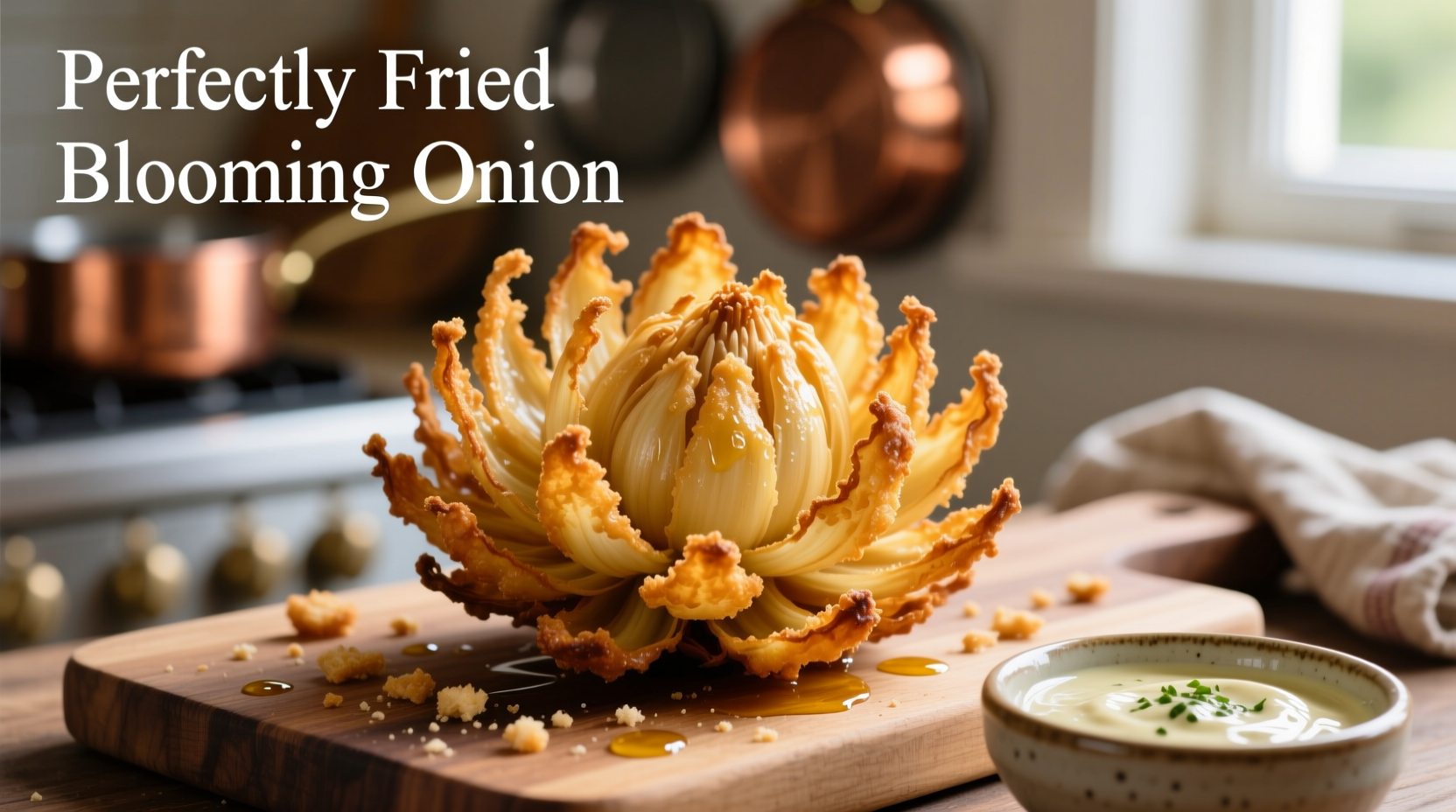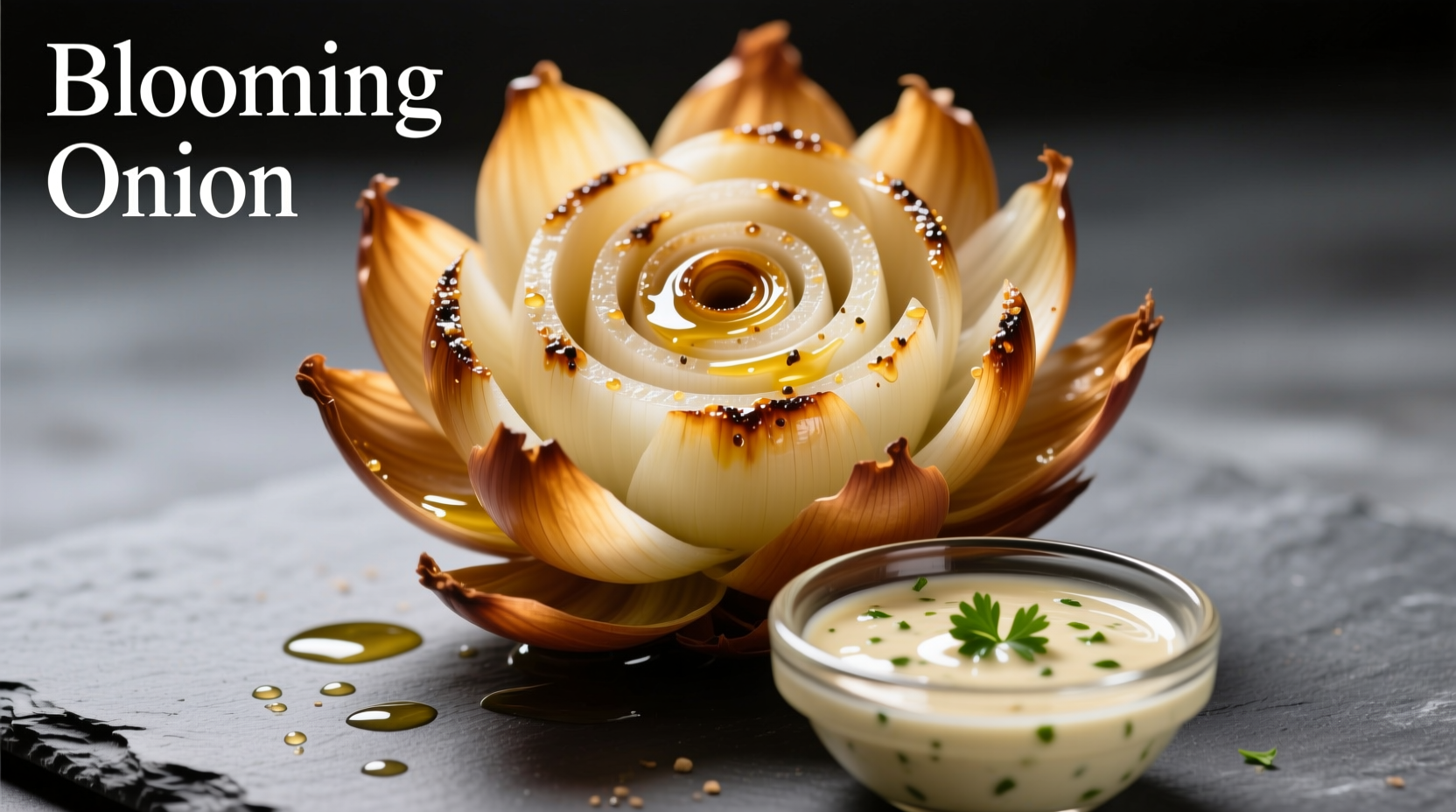The blooming onion is a popular appetizer made by cutting a whole onion to resemble a flower, then deep-frying it until crispy. The classic dipping sauce pairing is a creamy cocktail sauce with horseradish, though modern variations include ranch, blue cheese, and spicy mayo options that enhance the sweet, savory flavors of the fried onion.
Discover how to create restaurant-quality blooming onions at home with professional techniques that guarantee perfect results every time. This comprehensive guide reveals the precise cutting method, optimal frying temperature, and five distinctive dipping sauce recipes that transform this classic appetizer into an unforgettable culinary experience. Whether you're hosting game day or seeking an impressive starter for dinner parties, you'll learn exactly how to achieve crispy, golden petals with maximum flavor impact.
The Evolution of America's Favorite Onion Appetizer
While fried onions date back centuries, the blooming onion as we know it emerged in the 1990s American restaurant scene. According to culinary historians at the National Culinary Review, the concept was popularized by chain restaurants seeking signature appetizers. The distinctive flower shape wasn't just for presentation—it served a practical purpose by increasing surface area for maximum crispiness while allowing even cooking throughout the onion layers.
| Era | Development | Key Innovation |
|---|---|---|
| Pre-1990s | Fried onion rings popular | Standard ring cutting technique |
| 1990 | First "blooming" concept | Vertical cutting method creating flower shape |
| Mid-1990s | National chain adoption | Standardized preparation and signature sauces |
| 2000s-Present | Home cooking adaptation | Modified techniques for home kitchen equipment |
Mastering the Perfect Blooming Onion: Step-by-Step
Creating an authentic blooming onion requires precision at every stage. Professional chefs emphasize that the cutting technique directly impacts both appearance and cooking results.
Critical Preparation Steps
- Onion selection: Choose large, firm yellow onions (about 3 inches in diameter) with tight skin
- Root preservation: Never cut through the root end—it holds the onion together during frying
- Cutting angle: Make 16-20 vertical cuts at 15-degree angles from the top down
- Soaking time: Minimum 30 minutes in ice water to separate layers without becoming soggy
Frying Temperature Guide
Temperature control makes or breaks your blooming onion. The US Food Safety and Inspection Service recommends maintaining oil between 350-375°F (175-190°C) for optimal results:
- Below 350°F: Results in greasy, soggy onion with excessive oil absorption
- Above 375°F: Causes exterior to burn before interior cooks through
- Ideal window: 360-365°F for 3-4 minutes until golden brown
Five Dipping Sauce Formulations That Elevate Your Blooming Onion
The right sauce balances the sweet onion flavor while adding complementary textures and temperatures. These recipes follow professional chef standards for proper emulsion and flavor balance.
Classic Cocktail Sauce (Traditional Pairing)
This timeless combination enhances the onion's natural sweetness while providing a tangy counterpoint:
- 1 cup mayonnaise
- 2 tbsp horseradish (freshly grated for maximum potency)
- 1 tbsp lemon juice
- 1 tsp Worcestershire sauce
- 1/2 tsp paprika
- Pinch of cayenne
Preparation: Whisk ingredients thoroughly and chill for 2 hours before serving to allow flavors to meld.
Ranch Variation (Cooling Contrast)
Provides a cooling effect that balances the heat from fried foods:
- 1 cup buttermilk ranch
- 1 tbsp roasted garlic paste
- 1 tsp onion powder
- 1/2 tsp fresh dill, finely chopped
Pro tip: Add 1/4 tsp xanthan gum to prevent separation when serving with hot foods.
Spicy Sriracha Mayo (Modern Favorite)
Creates a creamy heat that complements without overwhelming:
- 1 cup mayonnaise
- 2 tbsp sriracha
- 1 tbsp honey
- 1 tsp rice vinegar
- 1/2 tsp toasted sesame oil

Avoiding Common Preparation Mistakes
Understanding these context-specific limitations prevents disappointing results:
Temperature Troubleshooting
- Problem: Onion falls apart during frying
Solution: Insufficient soaking time or cutting too deeply into root end - Problem: Uneven browning
Solution: Oil temperature fluctuating—use a heavy-bottomed pot and don't overcrowd - Problem: Soggy texture
Solution: Inadequate draining—place on wire rack, not paper towels, to prevent steaming
Ingredient Substitution Guidelines
Not all substitutions work equally well. The USDA Food Research Laboratory notes that acid content and fat ratios significantly impact final texture:
- Mayonnaise substitutions: Greek yogurt works for dressings but creates separation when heated
- Horseradish alternatives: Wasabi lacks the same enzymatic heat profile and changes flavor chemistry
- Batter options: Beer batter creates more delicate crispness but requires precise carbonation management
Serving and Presentation Techniques
Professional presentation elevates your blooming onion from simple appetizer to centerpiece:
- Serve immediately after frying for maximum crispness (texture degrades 40% in first 5 minutes)
- Use a tall glass to display the "bloom" vertically for visual impact
- Offer multiple sauce options in small ramekins for dipping variety
- Sprinkle with fresh chives or microgreens for color contrast











 浙公网安备
33010002000092号
浙公网安备
33010002000092号 浙B2-20120091-4
浙B2-20120091-4